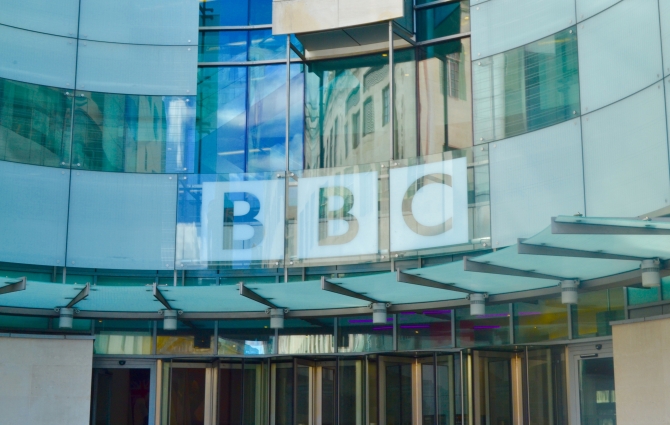 In advance of her 11 February public lecture on the state of children’s rights in the digital age, Professor Sonia Livingstone discusses the rights at stake for children worldwide and highlights why we must embed children’s rights into the policies and practices concerning “the digital”.
In advance of her 11 February public lecture on the state of children’s rights in the digital age, Professor Sonia Livingstone discusses the rights at stake for children worldwide and highlights why we must embed children’s rights into the policies and practices concerning “the digital”.
Fast-developing information and communications technologies (ICTs) are reshaping children’s lives for better and for worse: this is happening already in high-income countries, and expanding rapidly in middle-income countries and increasingly also in low-income countries. More and more children, families, and communities rely on technologies as part of the taken-for-granted infrastructure of everyday life. Almost every aspect of children’s lives has an online dimension, whether through their direct engagement with ICT or through the institutional management of contents or services that affect the conditions of children’s lives. Indeed, it is becoming hard to draw the line between offline and online.
As governments promote ICT so that businesses can compete in the global economy, they are formulating policies that rarely explicitly consider children’s needs. When talking about the market or the population, for instance, they tend to assume a competent adult ‘user’ who just needs access, or maybe a little skills training. Children’s needs tend to be ignored, left to parents or considered undemanding because children are supposedly ‘digital natives’ who are already more expert than adults.
Most research and policy regarding children’s rights in the digital age has stemmed from the global North, where ITU figures show that some 3 in 4 households already have internet access, compared with less than 1 in 4 in the global South. But in the global South there is a steady increase; these countries dwarf developed countries in terms of population, and since one third to one half of those populations comprise children, we are now at a tipping point in the growth of the online child population.
So it’s timely to consider children’s rights in the digital age. And to do so through a global lens.
The step change in where children go online raises new questions. Indeed the meaning of internet use is changing:
- Internet access is increasingly mobile first, rather than desktop or workplace first.
- In many countries access is more community-based (e.g. via cybercafés or various workarounds to gain access) than based at home or school (both more common in the West).
- Schools and parents cannot simply be relied upon to ensure children’s rights online because many children lack one or both.
- Internet access and content is increasingly commercialised (often with little local, public or own-language provision).
- Internet use increasingly occurs in contexts of very low or sometimes punitive regulation and as yet insufficient mediation by bodies charged with child welfare or well-being.
- The global North’s rather muted anxieties about socio-economic, ethnic or gender inequalities and exploitation become much more acute when viewed globally.
UNICEF’s recent review showed that in parts of Asia, the Middle East and Africa, we don’t even know how many children access the internet. Nor do we know what children around the world might want from the internet, or what they could meaningfully gain from it.
Which rights are at stake and whose responsibility are they?
Consider the key articles of the UN Convention on the Rights of the Child (CRC) relevant to children’s rights in the digital age. Of course, the CRC was formulated in the pre-digital era – but these rights remain as vital as ever.
In establishing basic standards that apply without discrimination to all children worldwide, the CRC is addressed to governments. Yet it is characteristic of globalisation in the twenty-first century that the power of national governments is being dispersed upwards to transnational organisations and global companies and, also, downwards to local organisations – as a result of de-regulation, commercialisation and political change. So now there are many more actors charged – more or less convincingly – with the responsibility to implement children’s rights in the digital age.
These actors face an array of problems:
- It is often said that existing legislation applies equally to the online domain, but in practice this can be difficult to implement and enforce.
- Currently there are many governance structures, with efforts to develop international regulatory bodies and forms of internet governance proving somewhat fragile and uneven.
- Most efforts – including most ‘bills of rights’ concerned with the internet focus on protection (if they mention children at all). This is often at the expense of children’s participation, and some countries have used the cover of child protection as a justification for blocking or monitoring public internet access.
- The fast-changing, highly complex and transnational nature of socio-technological infrastructures also challenges policymakers.
- It is also problematic that the internet is largely blind to age, treating children and adults equivalently and so rarely treating children according to their ‘evolving capacities,’ as specified in CRC Articles 5 and 14.
The articles of the CRC are commonly organised by the categories of protection, provision and participation, because this helps us to answer the question: why these rights? Broadly, what’s being emphasised is the right to protection from harm, the right to provision to meet needs, and the right to participation as an agent, some would say citizen. Our task, then, is to identify where, when and how the internet reconfigures the conditions of harm, need and agency, and then to pursue these through research, policy and practitioner agendas.
I use the notion of reconfiguration advisedly. The internet is not the cause of problems in children’s lives in any simple sense. And nor can it provide solutions in and of itself. The internet is created by people, controlled by people, used by people – and it’s they (we) who can change its consequences for our lives.
But the internet does make a difference: as a set of tools or environments within which we act, a medium through which we engage with the world. That medium has particular qualities – rendering content persistent, replicable and remixable, scalable and searchable – all via decentralised, ubiquitous, interactive, near-instant networked exchanges. But the consequences of its use, both positive and negative, are always experienced by people – material bodies, geographically located.
EU Kids Online
Our submission to the CRC’s 2014 Day of General Discussion summarised a host of European findings and evidence-based recommendations relevant to children’s rights in the digital age. In my recent report to UNICEF, I documented the rather sparse evidence from the global South, some confirming what we know from the global North, some raising new issues, and some adding grounds for urgency as problems go unresolved and opportunities are missed. From these and other sources of knowledge, it is already clear that children’s rights in the digital age are far from realised. How can this situation be improved?
Moving Forward
It is imperative to make all stakeholders thoroughly aware that, today, what happens offline will also be manifest online, that what happens online has consequences offline, and that we are witnessing a reconfiguring of risks and opportunities of children’s lives.
Children’s rights in the digital age are presently undermined by a mix of innocence, ignorance and worse. Can we find ways to embed the importance of ‘the digital’ into the policies and practices of the many organisations concerned with children’s well-being? Can we find ways to embed the importance of children’s rights into the policies and practices of the many organisations concerned with the digital? Do we want (could there be?) a trusted, efficient global governance body charged with ensuring the delivery of children’s rights? Many are discussing these questions internationally. But still the risks gain more attention than the opportunities. And while we debate options, opportunities to enhance children’s provision, protection and participation continue to be missed.
Sonia Livingstone will continue to explore the role of children’s rights in the digital age in her 11 February public lecture here at LSE. This post is adapted from an earlier post and her lecture at the Palais des Nations, Geneva, on 12 September 2014 Day of General Discussion of the Committee on the Rights of the Child.
This article gives the views of the author, and does not represent the position of the LSE Media Policy Project blog, nor of the London School of Economics and Politcal Science.





